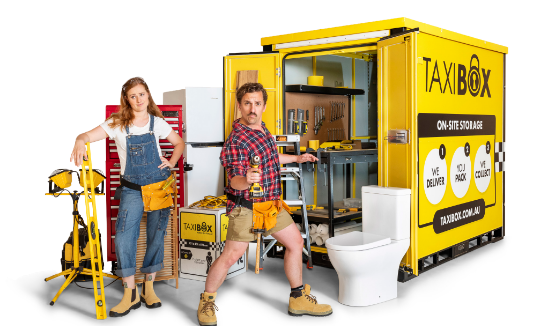Are you crowded by your belongings? Is your family growing faster than your space?
You’ve got belongings you want to keep, but you don’t have room to keep them at home. Maybe you only need them seasonally, or occasionally.
Are you moving and eager to take this chance to sort through all you own?
Maybe you’re downsizing. Or, maybe you only need extra storage for a few months because your new home isn’t ready for move-in yet.
These are just some of the reasons people turn to Chock-A-Box for their self-storage needs.
No matter the reason you’re interested in self-storing, here are five self-storage hacks to help you get the most from your unit.
Choose a self-storage solution that fits you.
You don’t want to pay too much, but you also don’t want to choose on price alone. There are other factors to consider and weigh against price, like access, security, and service. Ask yourself these important questions:
- Can I get to my unit quickly, and at times that work well for me?
- Will my belongings be safe and secure?
- Will the staff be attentive to my needs?
Protect your belongings.
If you’re storing something, it’s because it’s valuable to you. Right? Right. So treat it right.
- Keep your unit clean, and store clean belongings only. Like returning home to a clean house after a vacation, it’s a relief to return to a clean storage unit. When the new season comes, swap clean clothes for clean clothes. It’s the best way.
- The environment can throw curve balls, like extreme temperatures, pests, dirt, dust, and moisture. Store belongings in plastic bins with airtight lids. Vacuum seal all linens and clothes and use mattress bags. Coat wooden furniture with proper furniture polishes, and oil metal belongings to prevent rust. Wrap what you can (Uline works well), and keep as much from directly touching the ground and walls as possible.
- Appliances should be wiped dry of any water, and doors should be propped to avoid mildew.
- Avoid storing electronics at all, and especially if your unit will face boiling hot or freezing temperatures. Blankets can help, but they’re not a guarantee.
- Use your own lock. Keep the key safe, and have a backup. Hang one key on your keychain, and place another in a safe spot at home that you’ll remember. Apartment Therapy recommends an all-weather padlock with a short arm, to make it harder for a crafty someone to cut it off.
Organize. Label. Catalogue.
- Pack your belongings sensibly, putting items that go together, together.
- Label all boxes, legibly and with enough detail that you won’t have to open the box to find out if the belonging you’re looking for is indeed in that box. Hint: if you’ve packed sensibly, labeling shouldn’t be too cumbersome.
- Make a master list of what you’ve stored. Keep a copy at home, and leave a second (plastic protected) taped to the wall of the unit itself. Depending on how tightly packed your unit is – and how good your memory is – it can be helpful to include hints about where boxes are located within the unit itself. For example, the box with your winter sporting gear is in the front left corner. You think you’ll remember, but it always feels that way…until it doesn’t.
Use space effectively, and allow for easy access.
Have you ever dreaded opening a closet because you knew all the contents would come toppling out on top of you? You don’t want that feeling when it comes to your storage unit.
- Pack each box fully, and the unit carefully, so there will be little internal shifting and less (hopefully no) damage. Bubble wrap and packed newspaper work well to fill holes in boxes and hold items (especially fragile ones) in place. Moving blankets, old blankets, and old towels are good for protecting larger pieces that might scratch.
- Stack sensibly, with the heaviest boxes on the bottom and the lightest on top. Plywood can be useful for stability between layers of boxes, according to Apartment Therapy. Be particularly sensitive about where you place fragile items – they should typically be last in, so they’re not crushed by items in front or on top of them.
- Shelves are useful for storing smaller boxes and items, so consider putting an extra bookcase in your unit for shelf space.
- For large pieces, like furniture, disassemble as much as possible. Put screws, and any other connectors loosened in the disassembling, into a small plastic bag. Label the bag, and tape it to the piece it belongs to. You’ll thank yourself, and us, later.
- Use built-in hollow spaces, like drawers and garbage cans, to maximize space.
- What will you need to access most often? Keep whatever it is toward the top of the box it’s in, and that box in the front of the unit. Still, leave a path to the back of the unit, because, despite all your best planning, you’ll wind up needing something in the back even if you usually don’t.
Store what you actually want to store. Unload the rest.
Define your self-storage strategy. What are you storing, and why? Have you turned to self-storage as a temporary or permanent solution? How much self-storage cost can your budget handle? You should be able to answer these questions.
Some of the things you’re inclined to store might really be things you don’t need anymore. In those cases, you can donate, recycle, or toss.
If you’re using self-storage as an ongoing solution, revisit your unit over time – say every six months – for the purposes of seeing what you can get rid of. Maybe you can downsize your storage. Remember less storage space means less cost. You probably don’t want to pay storage for belongings you never use, or belongings you would use if only they were accessible at home.
Okay, you’ve just read about these hacks. Now we dare you to use them!
Commit to making the most of your self-storage. Begin right, or get on track, and you’ll make any maintenance simple and routine.
And if you do, you’re sure to have a self-storage unit that’s working for you, and not the other way round.









